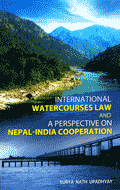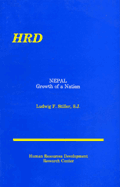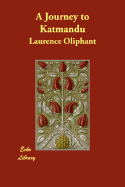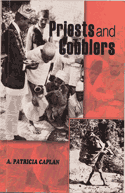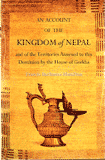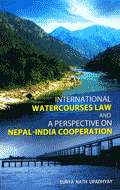
A watercourse describes any flowing body of water. This includes rivers, streams, anabranches, and so on. Nepal is a rich country in terms of its water resources. It has a functioning system of water law as well. Surya Nath Upadhyay’s International Watercourses Law and a Perspective on Nepal-India Cooperation (Kathmandu: Ekta Books, 2012) focuses on regional perspective. It deals with the past efforts in the Nepal-India cooperation in terms of the rules and principles of international law governing the navigational and non-navigational uses of international watercourses.
In the author’s note, which explains the objective behind the work, Upadhyay questions why the Nepal-India cooperation in the realm of water sector has not been laudable despite the fact that “we are not tired of eluding our close, extensive, traditional, cultural and religious ties” with India. Even though there are immense potentialities for enhancing the economies of both the countries by harnessing available watercourses, the efforts put to this sector are not commendable. “People of our countries rightfully deserve to know the reason and make their judgments in the light of several of our engagements so far in water resources between the two countries. They also should know what law governs our relationship in matters of water resources. This book is an attempt in this direction.”
A senior lawyer and former secretary of Nepal government, Upadhyay has divided his book into nine chapters. Beginning with general introduction of the theme, the author has given an outline of international water courses law and law on procedures of cooperation. Based on this outline, he has discussed Nepal’s water resources and cooperation efforts with India. Starting with the Nepal-India agreement on Kosi project, which set a bad example, he has comprehensively dealt with the Gandak project agreement and the treaty on integrated development of the Mahakali River. All these projects have been criticized in Nepal for unfair dealthey made. Based on these deals, and issues that have been generated, Upadhyay analyses the Indian approach to the development of water resources in the region. Here he finds a number of complications. Addressing these complications straight, the author has drawn some precise conclusions and recommendations.
Chapter 8 is the most important for all decision-makers. This is a chapter which explains how India maintains domination in the development of water resources in the South Asian region. It has been done by analyzing Indian position vis a vis regional verses bilateral cooperation, the deliberate disregards of the high ideals of SAARC, the principles bilateralism as it is applied to Nepal, the unilateral construction of projects and pushing it for approval as being fait accompli (for example, India’s illegal and unilateral construction of the Tanakpur Power Station), the opposition to Nepal-initiated projects, the plan of interlinking rivers in India to meet water scarcity and problem of droughts and floods, and the pathetic attitude towards developing any international law on water. Here the author has shown not only his legal skills, but also the ability to express in clear terms the nature of water politics and how it is being manipulated.
“First, [India] shall try to continue whatever use it can make within its territory without prior consultation with its neighbours. Second, it shall try scrupulously not to regionalize the subject matter of water resources. Third, it shall continue engaging with Nepal on all possible projects, but it shall advance only those projects which primarily serve its interests. Fourth, it shall try to de-link the hydropower use with that of water use and make advances and deal on hydropower cooperation, rather than on water resources. Fifth, as water, power, and security are intertwined, it shall try to have maximum control on those resources directly or indirectly. Sixth, it shall continue avoiding any generalization of policy or law, which shall bind itself for the future dealings.It will continue the engagement on a project-wise basis and take its position as its interests dictate. Seventh, it shall try to proactively create internal situations in the neighbouring countries, which shall be favourable to it for making deals. Eighth, it shall continue to exert its leverage in its deals on water resources with the neighbouring countries. The question, however, would be: does that serve the long term interests of India and the region?”To cut it short, Upadhyay calls a spade a spade.
The book helps general readers like this critique to understand international watercourses law with very lucid analysis. The Appendices attached to the book includes the Helsinki Rules on the Use of the Waters of International Rivers, the Convention on the Law of the Non-navigational Uses of International Watercourses, 1997, and Berlin Rules on Water Resources 2004. The author has tried to incorporate some cases and controversies concerning international watercourses. They provide background against which he analyses the basic substantive and procedural rights and obligations of states in the field.
Upadhyay admits that it is in the interest of both Nepal and India to cooperate with each other to harness available watercourses. Such cooperation is also welcome between Nepal and other South Asian countries. “What is required is sensitivity to the valid demands and the needs based on the rules of the game. It can happen without anybody losing, but everybody winning. A sincere understanding of water law and the rights or duties of the riparian states could help that process.”He does not, however, deal much with the weaknesses of Nepal’s own water machinery and its lack of direction. He also does not deal with how to build strategy on Nepal’s part to deal with a partner who has problematic habits.
This book is recommended to all scholars, students, and practitioners working in the area of international watercourses law, the related development agencies, and the policy makers of Nepal.
